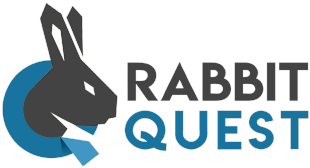How do you present a vitality initiative to the management team ?
Imagine standing in front of a room full of the management team and CEOs, ready to present your vitality initiative. The room is filled with expectations and curiosity but also with some skepticism. How do you convince them of the value of your next vitality initiative? How do you show that vitality is not only good for employees but also for the company as a whole? After talking to CEOs, we have listed the key components of a valuable presentation of your vitality initiative for you.
Time to read: 5 minutes
Map out the business impact of your initiative 🗺️
When you stand before the management team and CEOs, ready to stress the importance of your vitality initiative, you can already see it in their eyes: the question of whether you have concrete data and statistics. To convince them of your idea, it is important to present concrete data and statistics that show how investing in vitality can affect productivity, employee turnover, and company culture.
A compelling point to highlight is how large successful companies have integrated their vitality initiatives and seen demonstrable improvements in employee vitality and business results. By sharing these examples, the management team can clearly see that working on vitality works well for larger organisations.
Your vitality initiative has probably already been tried by other companies, and this is a great opportunity to share your experience with other companies, along with the statistics. Show how this investment in this health program resulted in a significant increase in productivity and a decrease in staff turnover. By sharing these examples, you show that investing in vitality is not just a cost, but an investment in the future growth and sustainability of the company.
While presenting your vitality program, be clear about your initiative's objectives and strategies 🎯
Have you ever started a recipe without knowing what you are going to make? You probably look up a delicious meal before you start cooking, and presenting a vitality plan, is no different. You want the management team to know what meal they are going to make before they start cooking. When presenting your vitality program, it is important first to clarify the objectives, expected outcomes and strategies of the initiative. For example, define specific objectives, such as reducing stress levels or improving work-life balance, and explain how your initiative will achieve these goals.
Another important part is presenting a detailed plan of action. By clearly displaying different steps, components, costs, and involvement of different departments within the organisation or external parties, there will be fewer questions from the management team, and they will get a better idea of how you intend to implement the vitality program. With these strategies, you show that you are well prepared to start immediately, or the initiative will go well even if you hand everything over to a colleague.
Involve the management team during your presentation 🤝
Think back to the time when someone asked you for input or feedback on a specific topic that was outside your role, but you secretly found very interesting. You probably gladly made time and space for that. People love having their voices and opinions heard and bringing input on someone else's creative ideas. An effective way to involve the management team in your vitality initiative is to invite them to give input actively. Encourage them to share their expectations, concerns, and suggestions for improvement. By doing so, you give them a sense of ownership and commitment to the program.
You can also involve them by organising an active brainstorming session in which the management team generates ideas together before launching a new vitality initiative. By working together on the vitality programme, you not only increase the chances of success but also strengthen ties within the HR team and management.
Make sure your presentation includes practical examples and case studies 📚
Before going on a trip to an unknown country, you probably want to hear or read how others have experienced this place. Is the location easily accessible? Did others have a good time? Are there enough restaurants? The management team is also currently about to take a trip to a perhaps unknown destination. They also want to know how others have experienced this journey to vitality, what it took others to make it a success, and what pitfalls the organisation can sidestep through the experiences of others.
Practical examples and case studies, like a tour guide, take the management team by the hand and start to dispel most of the question marks. For example, present examples of successful vitality initiatives within other organisations, including specific strategies, challenges, and results. This provides inspiration and shows what is possible.
Another powerful way to support your point is to share case studies of employees within the company who have benefited from participating in vitality programs. Show how these programs have helped reduce stress, improve health or increase productivity for individual employees. These personal stories can provide a powerful argument for the value of the vitality initiative.
Use the voice of employees to underpin your initiative 🎙️
Your vitality initiative is for the organisation's employees, so who better to tell what they need than them? You can make their voices heard during your presentation by using examples of employees' opinions. An effective way to do this is to share the results of anonymous surveys in which they indicate what they need or, for example, highlight suggestions from several less-fit employees through quotes from an interview. By sharing examples of employees' views on vitality or this particular initiative, you can show that their voices are heard and that the management team can understand how the initiative will soon be received. You can then move on to what employees have indicated they would like to see in a vitality initiative. This gives the management team insight into needs and expectations, which can help shape an effective and well-received program.
When you share that a less athletic employee indicates that exercising in the morning works better than in the evening after a day's work, there is a clear reason for choosing to use more flexible working hours in which an employee can start later on some days and end the working day later.
Focus with your vitality initiative on individual and collective benefits 👥
Okay, super. The management team is warmed up and gaining confidence in your vitality initiative through statistics and employee opinions; what's the final step? Not only is it important to talk about how a healthier lifestyle can improve the well-being of individual employees, but also how it can lead to higher team productivity and a more positive work environment. In addition, a vitality program can bring connection between colleagues and positively influence team spirit and the overall working atmosphere. These examples may sound very logical to you as an HR officer, but not every executive initially thinks of all these benefits.
Better physical and mental health for employees would obviously be great for you and your colleagues but also for the company as a whole. Vitality contributes to the organisation's overall performance and image by reducing absenteeism, increasing productivity, and improving its reputation as an employer. This focus on both individual and collective benefits can be a powerful argument during your presentation.
Presenting a vitality initiative to the management team and CEOs can feel like a big challenge. You are not alone in this! By sharing various statistics and case studies, communicating the program clearly and involving the management in developing your vitality initiative, all noses will automatically start moving in the same direction.
Would you like to see several vitality initiatives all together in one convenient place? Schedule an appointment with one of us and let's have a digital cup of coffee soon.




